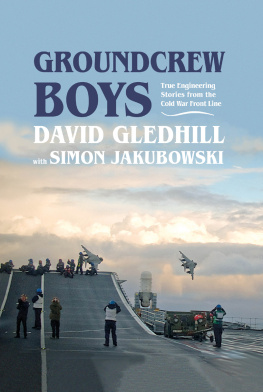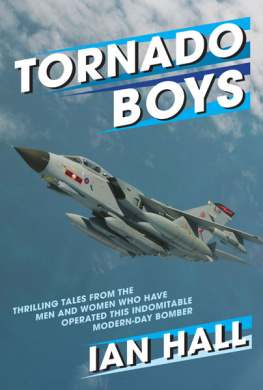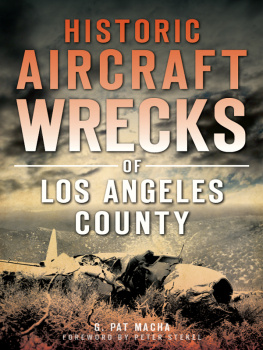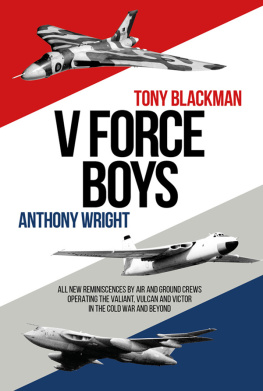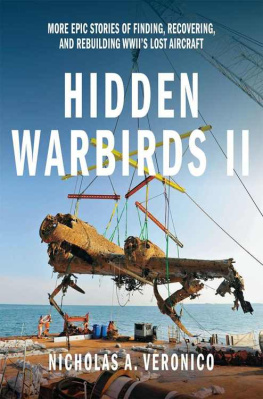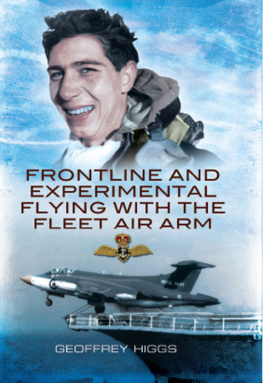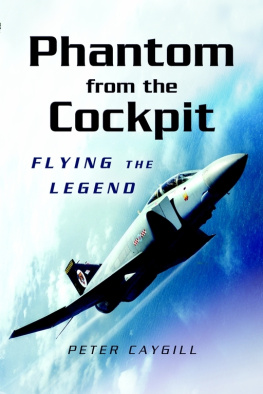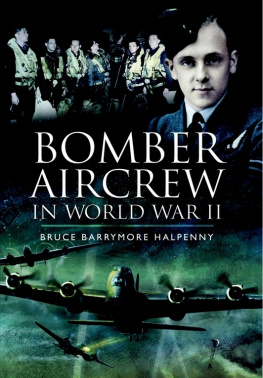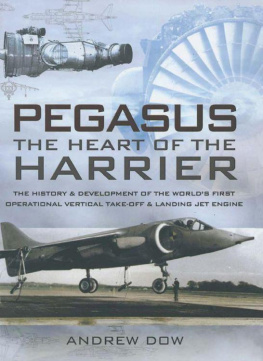Aeronautics was neither an industry nor a science. It was a miracle .
who loaned their precious machines to the aircrew who flew them.
All rights reserved. No part of this publication may be reproduced, stored in a retrieval system, or transmitted in any form or by any means electronic, mechanical, photocopying, recording or otherwise, without the prior permission of the copyright owner.

This book is dedicated to Andrew Wardy Ward . Wardy served as an armourer in the Royal Air Force from 1987 to 2006. Working on the Tornado F3 and, later, the Typhoon, he was universally admired by those who served alongside him. He passed away in February 2020 and will be fondly remembered by his friends and family .
Foreword
AIR COMMODORE GEORGE C. MARTIN MS C , CE NG , FRA E S
I am immensely humbled to have been asked to contribute a foreword to Groundcrew Boys and hope that my own words and those of the authors will help to embrace the esprit de corps , the kudos and unique standing of the roles, the opportunities, the skills, the characters, the tenacity, the resourcefulness and, ultimately, the professionalism of groundcrew across all our services.
In my own case, although now retired from the , I look back with great pride at the near 40 years I spent working in and around the support and operation of aircraft while managing the men and women who served as groundcrew. I cannot believe how fortunate I was to undertake so many fascinating roles and meet so many outstanding characters in my career as both an airman and an officer within the engineering trade of the RAF; all of which satisfied my thirst to support and maintain aircraft. I know I am not alone when I say my desire to work on, support, manage, design, certify and indeed fly aircraft of all shapes and sizes, in most corners of the world, was both a passion and a privilege.
Having read the tales in this book, I am drawn to just how many common themes they all contain. While there may be variations of aircraft, location and indeed service, beneath all of them are real-life stories that all of us, fortunate enough to have been in and around aircraft and the characters that support and operate them, can relate to. I, like most, have way too many tales to offer of humorous, exciting, sad, frightening and proud memories, however, on reflection, I am drawn to my first tour straight out of training to highlight two memories that I cherish and which I believe reflect the underlying beauty of the stories in this book to help define groundcrew colleagues past and present.
Having spent three years training as an apprentice (a Brat) at RAF Halton in the late 1970s/early 1980s, l was very fortunate that my first tour was on an operational, fast-jet squadronNo. 54 Squadronoperating Jaguars and based at the time, at RAF Coltishall, Norfolk. I was a sponge for the initial part of my tour and soaked everything up the crewroom banter which was fierce, the characters, the laughs, the humour and the wisdom of my colleagues.
I was only 20 years of age and working on a front-line squadron and recall thinking there was no better job in the world, especially when I was put under the watchful eye for nearly a month, of one of the squadron flight line mechanics (FLMs pronounced flem). Although my FLM was really old, probably 25 at the time, he was a king in my eyes since he had, on reflection, an encyclopaedic knowledge of the aircraft. He was one of eight FLMs on the squadron and all of them were go-to members of staff especially for the aircrew since, unbelievably, there was virtually nothing they didnt know about the aircraft. They did not pretend to be something they were not; they did not profess to be academically gifted, although many were; they did not profess to wish for themselves a full career ahead of them; they were happy remaining as some of the most junior ranks on the squadron and they were happy to remain and continue to do the magic they did. That said, to a man, they taught me so much and I have remained indebted for the sheer professionalism I saw from such a small band. Problems with fault diagnostics on the line? Call in the FLM; first port of call for the aircrew after a difficult flight? Call in the FLM; going on detachment and debating what equipment to load? Call in the FLM; want a special Christmas function organised? Yip, call in a FLM. Moral of the tale never, never judge the book by the cover!
The other individual who shone for me at that time on No. 54 Squadron was the squadron warrant officer, who was, no less, a formidable character. They all were/are but who I, on reflection again, owe so much to. It was he who, upon hearing the news that my mother had died unexpectedly while I was working on a night shift, brought me into his office the following morning, arranged a call with my father and on hearing it was going to take close to ten hours to get home by train, spoke to the squadron boss and negotiated a flight in the back of a Jaguar straight into a civilian airfield, to allow me to be with my family that afternoon, a gesture I still to this day cannot forget. It was he who, when he saw the paperwork with my offer of a commission, told me I was to sign it; my choices being a commission or going for three months on a Red Flag exercise in Las Vegas. Moral of the tale? As a manager your role is an absolute privilege so grab it with both hands and manage!
I look back in awe at these characters and say they were giants in my life who, without question, influenced how I behaved throughout my career regarding looking after colleagues. I can absolutely guarantee and I am not alone in saying, that the pedigree of groundcrew that all three services have enjoyed for many years, and withstood the operational challenges in many campaigns and conflicts, has been drawn and developed from, at its core, good education and training and the opportunity to have exposure to such a wealth of talent.
Enjoy what are some fascinating, and in the most part humorous, groundcrew tales which all help to open the door, across a mixture of services, ranks and experience levels, on the truly unique and fascinating life of groundcrew. They are totally professional personalities privileged to do, in my eyes, the best job in the world.

Following a three-year apprenticeship at RAF Halton, George Martin served as groundcrew on No. 54 Squadron at RAF Coltishall working on Jaguar aircraft. On successful selection for commission, he graduated as an engineering officer on No. 60 Initial Officers Course at RAF Cranwell in July 1982. During an extensive career supporting air operations he served on F-4 Phantoms at RAF Leuchars before then enjoying overseas tours in Hong Kong and Brunei. His tours of duty included being a weapons trials officer on Buccaneer, Tornado and Harrier; as the integrated project team leader for E-3D Sentry; as OC Engineering Wing at RAF Lyneham for C-130J/K and wing commander integrated logistics support for the Airbus A400M project at Abbey Wood. Promoted to group captain, he became the RAF director within the Post-Graduate Division for the Defence Academy. Returning to the procurement arena he was the operations manager responsible for the testing, build and acceptance into RAF service of the Nimrod MRA4 aircraft. He was the first chief air engineer appointed within 22 (Training) Group overseeing the introduction to service of the Hawk T Mk 2 advanced trainer at RAF Valley. His last tour of duty was as head of programmes in the Saudi Projects Team, based in Riyadh, Saudi Arabia supporting the programmes for Royal Saudi Air Force Typhoon, Tornado, Hawk and PC9/21 operations. He retired in 2016 and is now working for a leading UK defence contractor .

